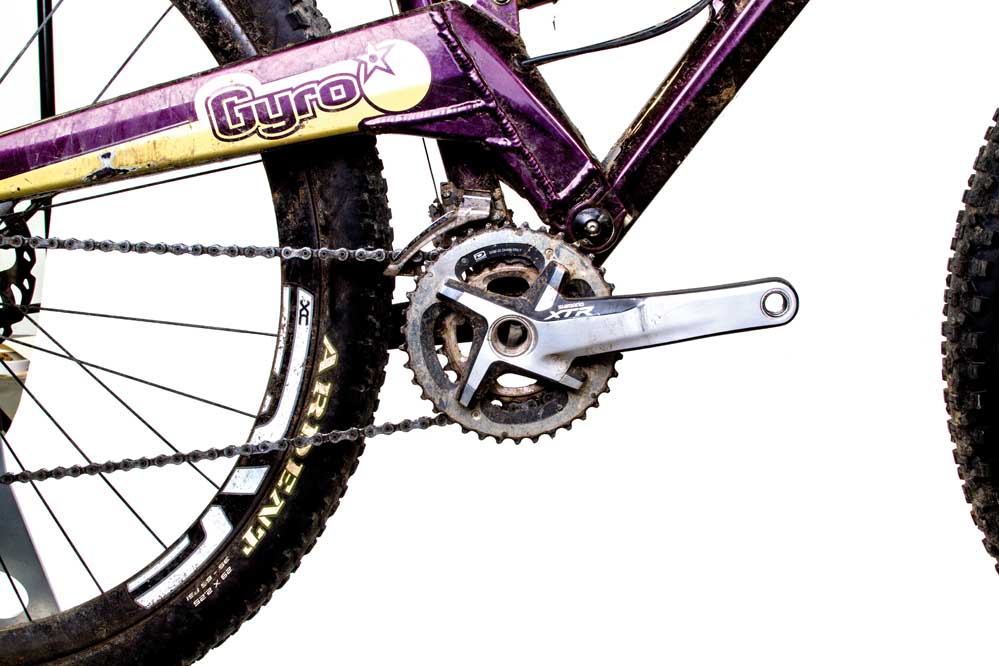Shimano’s XTR has been its top end groupset for about 20 years now. The ‘R’ stands for ‘racing’ and it has always been the preserve of the pro-rider and the pimp-bike owner. I say that, but I reckon the previous (flat grey) version of XTR started appearing all over the place as manufacturers sought to up-spec their bikes with a rear mech here and there. I don’t think this did Shimano many favours and I was perversely pleased to see that this incarnation of XTR returned the groupset to the ‘How much?!’ top flight of bicycle components.
The group is designed for performance without compromise – and this shows in the £210 cassette and £460 chainset. However, it hasn’t been done at the cost of style and I think it’s the best-looking Shimano groupset since the first ever XTR.
In terms of function, then, the group runs on the ten-speed ‘Dyna-Sys’ system, with both 2×10 and 3×10 options covered (and many riders choosing 1×10 too). I’ve been running a double chainset on my main mountain bike, as well as using other bikes with everything from ten to 30 gears. This groupset here came out just before the era of the clutch rear mech (the new version with clutch is £175) and I think that one of those would be a no-brainer choice these days, just for the silence and chain-keeping abilities.
Running the chain across those ten steel and titanium sprockets, the shift is smooth and precise, like a model engineer’s precision work. Shimano has evened out the shifter tension so that the shift from gear one to two takes the same pressure as nine to ten. The shift lever itself is forged aluminium with little dimples for extra grip with or without gloves. This texturising is repeated on the diminutive one-finger brake levers, too. Although everything is done to a final, target weight, there are the same neat and rarely noticed details found throughout Shimano’s range included – like a locking mechanism on the brake clamp to ensure the lever can’t fall off the bars if the brake bolt snaps.
The brakes are arguably the best bit of XTR. The Trail brakes are tiny, but shockingly powerful and consistent, whether in the rain or down a scorched mountainside. The mirror finish used throughout has so far refused to tarnish and even the part of the crank which usually suffers scuffing still looks serviceable after a lot of heel rub.
Probably the only downside to XTR is that it’s going to be rare that non-sponsored riders will replace parts like for like as they wear. With Shimano’s range of groupsets all being compatible with one another, it’s likely that a worn XTR cassette, brake pad or chainring will see an XT or even SLX replacement, purely for cost reasons. The upside of this is that the lower orders of Shimano components work equally well, just at a slight weight, finish and durability penalty; only completists (or groupset snobs) need be concerned.
I’ve done my best to give this groupset as little love as possible over the last year and, even after being put away wet or run dry, it all refuses to wear at anything but a gradual, stately rate. It is still in the realms of the sponsored rider and the bike perfectionist, but I think that’s just where it should be. After all, Shimano makes plenty of durable and decent cheaper components too.
Overall: If you can afford it, then it’ll certainly go the extra mile with and for you. Price, and the equally high quality of SLX and XT, are the only factors keeping me from recommending it to everyone.









